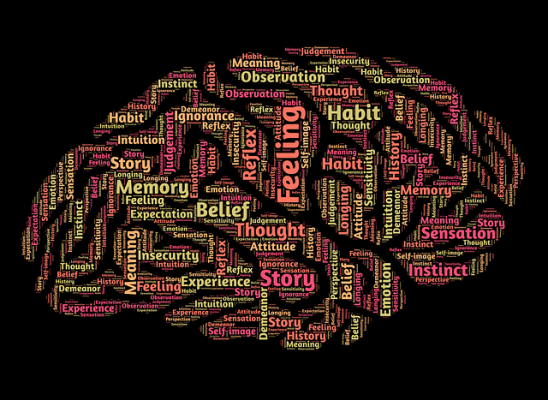NAC: Is It the Next Treatment for Hair Pulling? 2023 update

Online test
Find out the severity of your symptoms with this free online test
Trichotillomania, compulsive and repetitive hair pulling, is one of a group of disorders known as body-focused repetitive behaviors (BFRBs). They are classified as Obsessive Compulsive-Related Disorders. BFRBs are not the same as OCD but they do share similar qualities.
Like other mental health disorders, finding effective treatments has been challenging. For BFRBs like hair pulling, treatment options are limited and there are currently no established pharmacological treatments. Therapeutic interventions like Habit Reversal Training (HRT) have been helpful but are not always sufficient to sustain long-term remission. Options for treating OCD are limited as well and results have historically been poor. This lack of effective treatment options has prompted researchers to look beyond the traditional.
If you’ve searched for treatment for hair pulling, you’ve probably come across mention of something referred to as NAC. NAC (N-acetyl cysteine) is the supplement form of the amino acid cysteine. It plays a significant role in antioxidant production, in particular, glutathione, and modulation of glutamate. Glutamate dysregulation and glutathione have been shown to be associated with a number of mental health disorders including hair pulling, OCD, and even eating disorders.
So it’s not surprising that researchers are taking a closer look at NAC and whether it could be the next step in the quest for effective treatments. What can the literature tell us about NAC and its potential for treating BFRBs? A new study reviewed the existing literature and what it reveals about this antioxidant powerhouse.
Why NAC?
When it comes to NAC, the promise seems to be related to glutamate dysregulation. One of NAC’s important functions is to modulate glutamate. Glutamate plays an important role in brain functions such as:
- Learning and memory
- Energy source for brain cells
- Chemical messenger
- Sleep-wake cycles
- Pain signaling
Glutamate dysregulation occurs when the brain has too much or too little glutamate. This imbalance has been associated with a number of mental health disorders including:
- Mood and anxiety disorders
- Autism
- Depression
- Obsessive-compulsive disorder
- Schizophrenia
One area of research that has been receiving a lot of attention is the idea of treating disorders with similar characteristics either synergistically if they are co-occurring or using the same interventions for similar disorders. For example, aspirin has traditionally been used as a pain reliever. It has also been used to treat other medical issues such as preventing blood clots and as an emergency intervention for stroke or heart attack. Different presentations but with similar biological underpinnings that the same medication helps.
Researchers have found a link between glutamate dysregulation and both OCD and hair pulling. Hair pulling and OCD also share similar psychological characteristics. Both involve the experience of tension or compulsion and difficulty resisting those urges. So it isn’t surprising that researchers would look to NAC as a possible intervention. While the first-line treatment of OCD using Selective Serotonin Reuptake Inhibitors (SSRIs) isn’t always adequate, evidence suggests that adding NAC seems to improve treatment response. For hair-pulling, findings suggest that supplementing with NAC may be helpful in reducing hair-pulling behaviors.
So what does this mean for the use of NAC? Is it as promising as it seems?
What Does the Literature Tell Us?
On the surface, it sounds like NAC could be a power player in the treatment of BFRBs. However, a closer look reveals some interesting findings.
The 2022 review of the literature found that there is theoretical and pre-clinical evidence to suggest that using NAC for treatment of BFRBs might be helpful. However, it also revealed how much is still unknown.
- There have been very few long-term studies or studies using a large sample size. In other words, the studies to date have largely been based on short-term results and small sample sizes making it difficult to generalize to the larger population of people living with a BFRB. It also raises the question of whether NAC could be more effective for one type of BFRB over another.
- Effective dosing is unclear. Studies have used various dosing protocols. There seems to be some question as to what is considered a therapeutic dose vs. a subtherapeutic dose.
- Dosing is unclear for specific populations, especially pediatric vs. adult patients. Dosing is rarely a one-size-fits-all.
- Many of the studies also included the use of concurrent treatments. For example, some studies included the use of NAC along with an SSRI or psychotherapy making the effects of NAC unclear.
- The presence of patient comorbidities also complicates the picture. Comorbid mental health disorders were present in participants in many of the studies. The reviewers suggest that the presence of other psychiatric conditions could have lessened the therapeutic effects of NAC in at least one of the studies they reviewed.
Finally, there is the question of medication compliance. Most studies were conducted at the outpatient level making medication compliance difficult to track. NAC has poor bioavailability so inconsistent medication compliance could impact its efficacy and skew treatment results.
What Does This Mean For The Future Of NAC?
While the evidence seems promising, the reviewers suggest that more studies are needed to more fully explore the potential benefits of NAC in the treatment of BFRBs. They recommend:
- Addressing methodological concerns
- Using a larger sample size with longer treatment durations
- Determining therapeutic dose ranges especially for adults vs. pediatric patients
- Given the poor bioavailability of NAC, consider exploring the efficacy of other glutaminergic agents such as memantine and glycine
- Exploring non-pharmacological interventions such as non-invasive brain stimulation (NIBS) which has shown some efficacy with OCD.
Given their findings, the reviewers concluded that while NAC shows some promise in treating BFRBs, there is not enough evidence to recommend NAC for treating BFRBs at this time. Even though they were unable to fully endorse the use of NAC, being able to look at the bigger research picture in this way helps broaden the understanding of issues related to treatments for BFRBs and gives hope for finding innovative, effective treatments.
References
1. Glutamate: What it is & function. (n.d.). Cleveland Clinic. https://my.clevelandclinic.org/health/articles/22839-glutamate
2. Beaulieu, A. M., Tabasky, E., & Osser, D. N. (2019). The psychopharmacology algorithm project at the Harvard south shore program: An algorithm for adults with obsessive-compulsive disorder. Psychiatry Research, 281, 112583. https://www.sciencedirect.com/science/article/abs/pii/S0165178119313629?via%3Dihub
3. Hurley, M. M., Resch, J. M., Maunze, B., Frenkel, M. M., Baker, D. A., & Choi, S. (2016). N-acetylcysteine decreases binge eating in a rodent model. International Journal of Obesity, 40(7), 1183-1186. https://www.nature.com/articles/ijo201631
4. Lee, D. K., & Lipner, S. R. (2022). The potential of N-acetylcysteine for treatment of trichotillomania, excoriation disorder, Onychophagia, and Onychotillomania: An updated literature review. International Journal of Environmental Research and Public Health, 19(11), 6370. https://www.mdpi.com/1660-4601/19/11/6370
5. Grant, J. E., Odlaug, B. L., & Won Kim, S. (2009). N-acetylcysteine, a glutamate modulator, in the treatment of trichotillomania. Archives of General Psychiatry, 66(7), 756. https://jamanetwork.com/journals/jamapsychiatry/fullarticle/483113
Online test
Find out the severity of your symptoms with this free online test
Start your journey with TrichStop
Take control of your life and find freedom from hair pulling through professional therapy and evidence-based behavioral techniques.
Start Now



